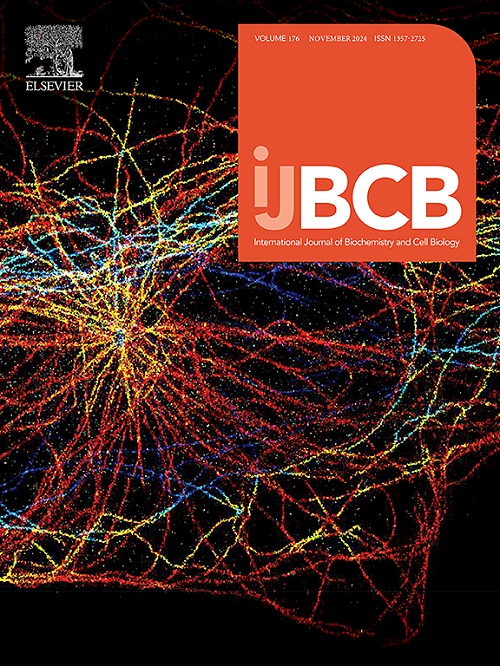一种用于鉴别膀胱癌预后和免疫疗法反应的改良泛凋亡模型
IF 3.4
3区 生物学
Q2 BIOCHEMISTRY & MOLECULAR BIOLOGY
International Journal of Biochemistry & Cell Biology
Pub Date : 2024-10-04
DOI:10.1016/j.biocel.2024.106672
引用次数: 0
摘要
背景:细胞死亡包括凋亡和坏死,统称为广泛凋亡。本研究旨在探讨膀胱癌广泛凋亡相关修饰模式的作用机制:方法:利用临床基因组学数据库,我们获得了膀胱癌患者的转录组数据和相关临床信息。方法:利用临床基因组学数据库,我们获得了膀胱癌患者的转录组数据和相关临床信息,通过最小绝对缩减分析,我们构建了一个风险模型,并对膀胱癌中的差异基因进行了单细胞测序分析:结果:五个与广泛凋亡相关的差异表达基因(TMPRSS4、TPST1、FOXD1、ELOVL4、EMP1)被确定为预测膀胱癌患者预后的特征。生存曲线分析显示了预后的显著差异(PConclusion:PANscore作为一种潜在的预后和免疫治疗生物标志物,将为个性化治疗策略提供更精确、更合理的依据。本文章由计算机程序翻译,如有差异,请以英文原文为准。
A modified model of PANoptosisto identify prognosis and immunotherapy response in bladder cancer
Background
Cell death, including apoptosis and necrosis, collectively known as widespread apoptosis. The present study aims to investigate the mechanism of action in widespread apoptosis-related modification patterns in bladder cancer.
Methods
Using a clinical genomics database, we obtained transcriptomic data and related clinical information of bladder cancer patients. By employing the least absolute shrinkage analysis, we were able to construct a risk model and single-cell sequencing analysis of differential genes in bladder cancer.
Results
Five differentially expressed genes (TMPRSS4, TPST1, FOXD1, ELOVL4, EMP1) associated with widespread apoptosis were identified as features for predicting the prognosis of bladder cancer patients. Survival curve analysis revealed significant differences in prognosis (P<0.05). Additionally, multivariate Cox regression analysis determined the independent risk factor for bladder cancer prognosis as the risk score (P<0.001), with high confidence in the scoring model validated internally (P<0.001). Single-cell sequencing reveals high expression of CDKN2A, ERBB2, and TMPRSS4 in B cells, while HRAS is significantly expressed in fibroblasts.
Conclusion
PANscore, as a potential prognostic and immunotherapeutic biomarker, will provide more precise and rational basis for personalized treatment strategies
求助全文
通过发布文献求助,成功后即可免费获取论文全文。
去求助
来源期刊
CiteScore
8.10
自引率
0.00%
发文量
124
审稿时长
19 days
期刊介绍:
IJBCB publishes original research articles, invited reviews and in-focus articles in all areas of cell and molecular biology and biomedical research.
Topics of interest include, but are not limited to:
-Mechanistic studies of cells, cell organelles, sub-cellular molecular pathways and metabolism
-Novel insights into disease pathogenesis
-Nanotechnology with implication to biological and medical processes
-Genomics and bioinformatics

 求助内容:
求助内容: 应助结果提醒方式:
应助结果提醒方式:


